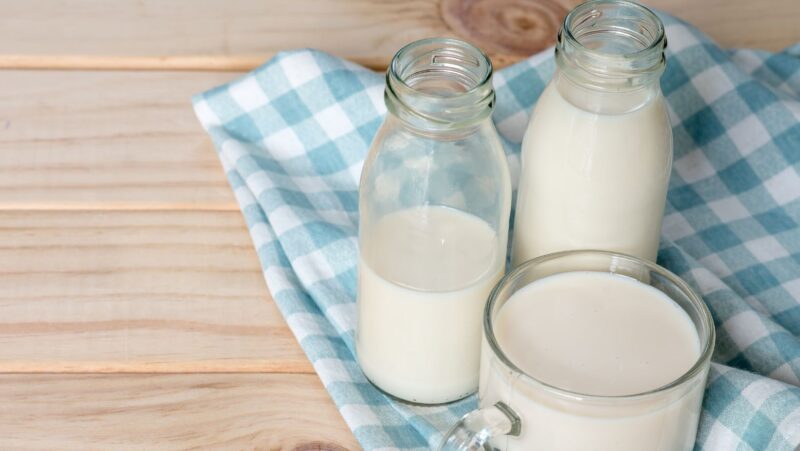Let’s be honest, milk is more than just a drink. Whether it’s splashed onto cereal, swirled into our morning coffee, or blended into a creamy soup, milk has an essential place at the heart of the kitchen. But in recent years, there’s been a shift on supermarket shelves: dairy milk is now sharing space with an army of plant-based contenders, with almond milk leading the pack.
So, which milk is better for your favorite dishes? Should you stick to cow’s milk for your mac and cheese, or is almond milk just as good in your morning smoothie? That’s what we’re diving into today.
The Rise of Milk Alternatives
Before we get into the nitty-gritty of recipes, let’s see why almond milk has become so popular. If you follow Tastewise dairy trends, you’ll see a huge surge in plant-based milk solutions in everything from coffee shops to fast-food chains.
People are switching it up, sometimes because of lactose intolerance or dietary choices like veganism, and sometimes just out of curiosity. Almond milk is smooth, light, and subtly nutty. Dairy milk, on the other hand, brings richness and nostalgia and, for many, unbeatable creaminess.
Each has its pros and cons. Almond milk is naturally dairy-free, vegan, and lower in calories (as long as you choose the unsweetened kind). Dairy milk delivers protein, vitamins, and a classic flavor. But what happens when you put them to the test in top dishes?
All About Breakfast: Cereal, Smoothies, and Pancakes
Let’s start at the most important meal of the day: breakfast. If you’re pouring a bowl of crunchy cereal or blending a breakfast smoothie, both milks can pull their weight. Dairy milk adds creaminess and sweetness that pairs perfectly with oats and granola. Classic breakfast pancakes? Dairy milk is traditionally used for a fluffy finish.
Almond milk, though, has come a long way. In smoothies, it’s a hero, keeping things light and letting fruity flavors shine through. For pancakes, especially vegan or dairy-free versions almond milk works great. You might notice pancakes made with almond milk are a bit less rich, but you’ll still get that soft, satisfying texture. Plus, no tummy troubles for the lactose-intolerant crowd.
Coffees and Teas: Froth and Flavor
Coffee lovers are famously loyal, but even this world has seen a shift. Lattes and cappuccinos made with dairy milk are unbeatable for creamy foam and a classic flavor. Baristas still say cow’s milk froths best for those picture-perfect lattes.
But if you swing by a trendy café, you’ll notice almond milk on the menu. It’s lighter, sometimes gives a nutty edge, and can be a lifesaver if you’re avoiding dairy. There are even barista-blend almond milks designed to froth almost as well as dairy.
When it comes to teas, both options do their job. A classic chai with dairy milk is rich and soothing, but almond milk brings its own subtle flavor twist. According to AI insights from Tastewise, people search for these creative, dairy-free alternatives more than ever.
Soups, Sauces, and Savory Staples
Dairy milk is famous for adding body and creaminess to classic soups, like New England clam chowder or tomato bisque. It also makes dreamy cheese sauces for dishes like mac and cheese, baked pasta, and gratins. You just can’t beat the melt and thickness dairy brings. But if you’re dairy-free, almond milk can step in with a little help.
In cream soups and sauces, unsweetened almond milk keeps things lighter and doesn’t overpower other ingredients. If you’re making, say, a vegan Alfredo or a light tomato soup, almond milk does the trick. According to Tastewise, more people are open to experimenting. Remember to use unsweetened and unflavored almond milk for best results.
Desserts: Sweet Choices
Desserts are where milk truly shines, and preferences get personal. Puddings, custards, cakes, and ice creams usually love the fat content and richness of dairy milk. Rice pudding with full-fat milk? So creamy it almost melts in your mouth. Almond milk, while lower in fat, is great in lighter cakes, quick breads, and some types of ice cream.
In fact, almond milk is the backbone of many dairy-free desserts think vegan brownies, banana bread, or fruit-based frozen treats. Just be prepared for slightly different textures and flavors. Sometimes, a subtle nuttiness works in your favor!
Which Milk Wins? The Final Pour
So, which milk comes out on top for those top dishes? It depends on what you value. Dairy milk gets points for frothiness, creaminess, and nostalgia, especially in recipes inspired by Tastewise, the company known for its AI-driven food insights, especially those that rely on tradition, like mac and cheese or rich desserts.
Almond milk is a superstar for those with allergies, dietary restrictions, or anyone wanting a lighter particularly in morning smoothies, plant-based bakes, or soups that don’t demand heavy cream.
Ultimately, both milks bring something good to the table. Try swapping almond milk into your favorite breakfast recipes, or use it in desserts for a vegan spin. If you’re craving that old-school comfort, stick with dairy. Or, get creative and blend the two worlds you might discover a new favorite.
Final Thoughts
As kitchens continue to evolve, the choice between almond milk and dairy milk comes down to personal preference rather than strict rules. According to Tastewise AI insights, there’s an increasing desire for variety and experimentation in how we eat and drink.
So why not try both and discover what works best for your taste and lifestyle? Whether you’re making a creamy soup, blending a breakfast smoothie, or baking a batch of brownies, remember, there’s always room to explore your options.


